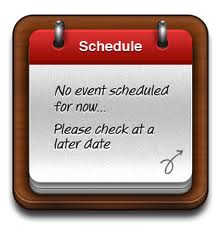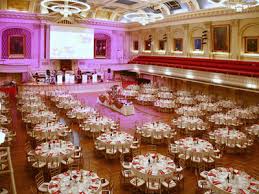
It happened again.
I was in a meeting with the fundraising staff of a very prominent and successful non-profit, and the leader of the major gifts program told the familiar story of how he and his staff had been pulled away from their major gift work to organize an event that “meant a lot to the board.”
I was stunned by what I was hearing. I knew that the major gift staff already had its hands full with substantial increases in goals for the fiscal year. Now it was being recruited to spend a good deal of time and money organizing a feel good event that, quite frankly, had nothing to do with fundraising.
It is true that the event would “net” $50,000. But when I heard that number I asked if staff time had been calculated into the cost. No, it hadn’t. And when we did the math, that $50k net disappeared in a nanosecond.
What is it about non-profits, their boards, leaders and staff, that causes them to so easily catch “events fever” and lose their way on thinking objectively about this topic?
It is true that a well-organized event, with the right content, can raise the profile of the non-profit. But then, why not have the PR or communications department handle it? Why pull the major gift folks away from relating to their good donors to do this work? I know. It’s because the donors on the caseload will be the core group who will make the event financially successful.
Hold on. Did you hear what I just said? The donors on the caseload will make the event financially successful. Hmmm. So we are moving money from the MGO’s caseload to the event and increasing the expense to secure that money? Yep. Crazy. And likely, the gift the major donor gives at the event will be far less than what she could have given if the MGO had managed the giving outside of the event.
But… but… these major donors will bring their friends and we can make them our friends and everything will be grand! It’s true. I have seen this happen, but not very frequently. Here’s why. The friend has come at the invitation of the major donor and two things are working against the friend getting further involved:
- The friend is simply servicing an obligation – He or she has no intention of getting involved. It is a nice social time out with a good friend and that’s that. Or they are trading favors. “You came to my gig last month. I go to yours now.” And while you could turn this around with a compelling program, the fact is…
- There is no compelling program presented. This has always amazed me. We get all of these wonderful people together. And they have a ton of capacity to give. But all we offer, besides a nice meal, is some quick facts about who we are, a testimonial, an award to a board member or key volunteer and other nicey-nicey things. And everyone goes home feeling good.
If the leaders in your organization have events fever, or, in other words, if hardly any argument or reasoning will dissuade them from organizing an event, then make the best of it by doing the following:
- See if you can get some other department to do the heavy lifting – Get PR, communications, the volunteer coordinator, the assistant to the executive director – someone other than you, to organize it. In other words, protect your major gift time as best you can. Time is all you have. And there is very little of it to put toward relating to your caseload donors. So have a mindset of delegating as much as you can.
- Not a new idea and regularly done – sell tickets to cover costs. I only mention this to set up the next point. Your objective is to break even or have a positive net to cover the labor involved.
- Create a compelling program that presents an “I can’t avoid supporting it” project. Yes, you heard me correctly. I am suggesting selling tickets AND asking for gifts at the event. And the ticket selling process should clearly outline what you are doing. “I am selling tickets to cover costs because I want you to come with your friends and hear about this exciting ‘must do’ project.” Word it something like that, but said better and more strategically. Obviously, you have to create something that the donor and their friends and other prospects want to attend. Think about this as you would when you go out with friends to dinner and split the check. That’s all that is going on. The donors are covering the cost to attend a presentation. The whole event must then be carefully choreographed, from start to finish, so that the donors and their friends are completely engulfed in the drama and journeys of the people who will be helped when they get involved. When I say start to finish I mean things like:
- The look of the ticket and program.
- Signage at the venue.
- Material on the tables or, if outside, then those materials as well.
- What the greeters say to people coming in.
- The sequencing, cadence and messaging of the program – every single element is discussed and programmed. Nothing is left to chance.
- The testimonials and comments of people invited to speak.
- The pictures, videos, music and any other program elements.
- Everything. Every single element is strategic – even when and how a meal is served. Everything.
- The price tag for the project needs to be large enough to accommodate the giving goals you have set for every donor on your caseload and their friends and other non-donors who may be present. You do not want to have a $100,000 project when the sum of all the goals of the donors present is $750,000. Doesn’t make sense.
Here’s the thing. Nothing is left to chance. Everything is intentional. And all of it draws you to this amazing thing “we must all do”! That is what I mean by compelling. You are drawn in and compelled to act. That is how engaging the program/project is.
- “Seed” the event and the giving at the event with up-front giving by selected donors. Go to selected caseload donors and ask them to come to the event and make a commitment to the project. You might ask for a matching gift that can be unveiled at the event. It could really be quite dramatic. Picture this: the project is $850,000 and one donor, in advance, has pledged a $300,000 matching gift. At a strategic moment at the event, the Executive Director calls on the donor to speak. She says something like: “When I heard about this project I just had to get involved. Think of the difference we all could make if, tonight, we funded the whole thing! It would be so exciting. Look at all the lives that would be forever changed. That is why I am putting up a $300,000 challenge grant. Whatever you give tonight up to $300,000, I will match. Come on, let’s get this done!” Wow, that would be something.
OK. So, you get what I am saying about the same old, same old event vs. a version of what I am describing above. This is a real fundraising event. Not the faux event that so many non-profits spend so much time on. If you are going to do an event, do it right. Make it cause oriented vs. just a happy time.
The cause is why the donors are involved – they want to make a difference in someone’s life. Program your event toward that reality. It will make a tremendous difference in the financial outcome and how the donors feel about your organization.
Richard







When I shared this post, it really seemed to resonate with all of my friends and colleagues in the nonprofit world. I recently had a board member tell me that we need to plan another special event to bridge a projected budget gap. I took that opportunity to explain why fundraising events are not the best way to raise money.